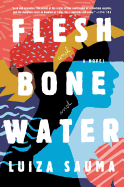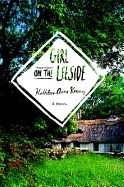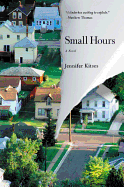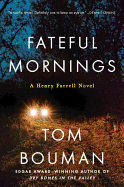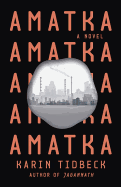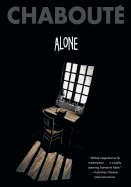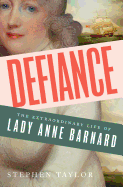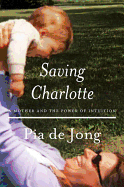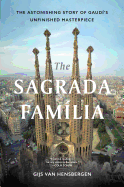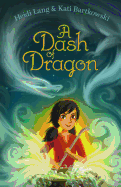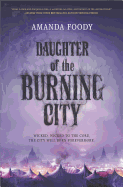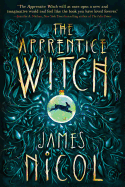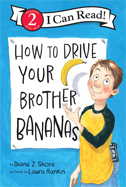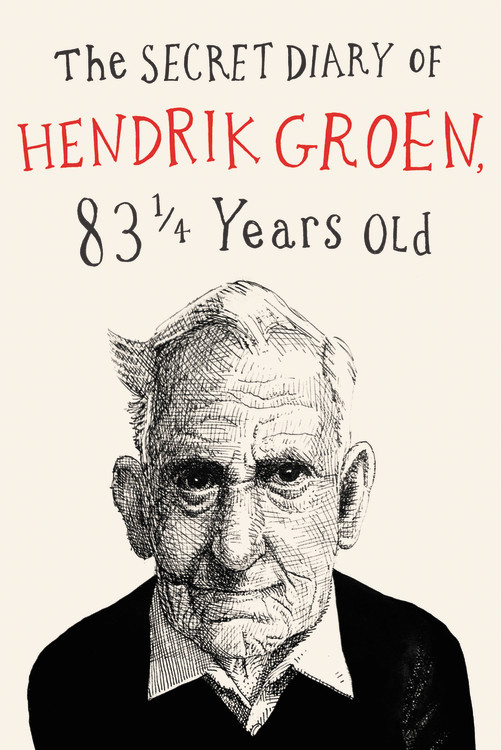 Very little is known about 61-year-old Dutch librarian Peter de Smet, the author of The Secret Diary of Hendrik Groen, 83¼ Years Old, out now from Grand Central Publishing. But there is plenty to be learned about Hendrik, an endearing, curmudgeonly character with plenty to say. Here's an excerpt:
Very little is known about 61-year-old Dutch librarian Peter de Smet, the author of The Secret Diary of Hendrik Groen, 83¼ Years Old, out now from Grand Central Publishing. But there is plenty to be learned about Hendrik, an endearing, curmudgeonly character with plenty to say. Here's an excerpt:
Tuesday, January 1, 2013
Another year, and I still don't like old people. Their walker shuffle, their unreasonable impatience, their endless complaints, their tea and cookies, their bellyaching.
Me? I am eighty-three years old.
Wednesday, January 2
Great clouds of icing sugar were spilled a moment ago. Mrs. Smit had put the plate of apple tartlets on a chair because she wanted to wipe down the table with a cloth.
Along comes Mrs. Voorthuizen, who inadvertently parks her enormous bottom right on top of the pastries.
It wasn't until Mrs. Smit began looking for the dish, to put it back, that someone came up with the idea of checking underneath Mrs. Voorthuizen. When she stood up she had three tartlets stuck to her flowery behind.
"The apples match the pattern on your dress perfectly," Evert remarked. I almost choked to death laughing.
This brilliant start to the new year should have given rise to all-around hilarity, but instead led to forty-five minutes of carping about whose fault it was. I was glared at darkly from all sides, on account of having found it funny, apparently. And what did I do? I mumbled I was sorry.
Instead of laughing even harder, I found myself groveling for forgiveness.
For I, Hendrikus Gerardus Groen, am ever the civil, ingratiating, courteous, polite, and helpful guy. Not because I really am all those things, but because I don't have the balls to act differently. I rarely say what I want to say. I tend to choose the path of least confrontation. My specialty: wanting to please everybody. My parents showed foresight in naming me Hendrik: you can't get any blander than that.
I'll wind up spiraling into depression, I thought. That's when I made the decision to give the world a little taste of the real Hendrik Groen. I hereby declare that in this diary I am going to give the world an uncensored expose: a year in the life of the inmates of a care home in North Amsterdam.
I may die before the year's out, true; that's beyond my control. In that circumstance I will ask my friend Evert Duiker to read a few pages from this diary at my funeral. I'll be laid out, neatly laundered and pressed, in the small chapel of the Horizon Crematorium, waiting for Evert's croaky voice to break the uncomfortable silence and read some choice passages to the bewildered mourners.
I do worry about one thing: what if Evert should die before me?
It wouldn't be fair, considering that I have even more infirmities and funny lumps and bumps that he does. You ought to be able to count on your best friend. I'll have to have a word with him about it.
Thursday, January 3
Evert was keen but wouldn't guarantee he'd live longer than me. He also had a few reservations. The first was that after reading publicly from my diary he'd probably have to look for another place to live. The second consideration was the state of his dentures, caused by a careless jab of the pool cue by Mr. Vermeteren. Since he has a cataract in his right eye, Vermeteren needs some assistance with his aim. Evert, ever prepared to help, was standing behind him giving directions, his nose lined up with the cue. "A little to the left and a bit deeper..." and before he could finish Vermeteren had rammed the back of his cue right through Evert's snappers. Score!
Now Evert looks like a little kid waiting for a visit from the tooth fairy. People have a hard time understanding him because of the lisp. He'll have to have those teeth fixed before reading at my funeral. But that's not going to happen any time soon; the denture repairman, it seems, is out of action. Two hundred thousand a year, an assistant who's a real looker, three trips to Hawaii every year, and still his nerves are shot; how is it possible? Maybe years of having to deal with ancient dentures so food-encrusted that they're crawling with maggots have sent him over the edge. So to speak.
The New Year's doughnuts they're serving in the Conversation Lounge downstairs can only have come from the thrift shop. Yesterday morning I took one to be polite and spent a good twenty minutes trying to get it down; as a final resort I had to pretend my shoelace had come undone so that I could duck under the table and stuff the last piece down my sock.
No wonder they had hardly been touched. Normally anything that's free around here is gone in the blink of an eye.
In the Conversation Lounge, coffee is usually served at 10:30. If the coffee hasn't arrived by 10:32, the first residents start glancing pointedly at their watches. As if they had something better to do. The same goes for tea, which is supposed to be brought in at 3:15 in the afternoon.
One of the most exciting moments of the day: what kind of cookies will we have with our tea and coffee today? Both yesterday and the day before it was the elderly doughnuts. Because of course "we" wouldn't dream of throwing food away. We'd rather choke to death on it.
Friday, January 4
Yesterday I took a walk to the flower shop to buy some potted bulbs. So that I can tell myself a week from now, when the hyacinths start to bloom, that I've made it to another spring.
Most of the rooms in this retirement home keep their Christmas decorations on display until April. Next to an ancient sansevieria and a primula whose days are numbered. "Be a shame to throw it out."
If Nature's role is to bring cheer to a person's life, it certainly doesn't do the job in the room of a Dutch old-age pensioner. There the condition of the houseplant is usually an accurate reflection of the state of mind of the human entrusted with its care: both just waiting for the sad end. Since they have nothing else to do, or are a bit forgetful, the old biddies water their plants at least three times a day. In the long run not even a sansevieria can survive that.
Mrs. Visser has invited me in for a cup of tea tomorrow afternoon. I should have declined, if only because of how she smells, but I said I would love to stop by for a minute. There goes my afternoon. What a stupid wimp I am. On the spure of the moment I couldn't think of a good excuse, so I'll have to endure the mindless jabbering and the dry sponge cake. How she manages to turn the moistest of cakes into dusty cardboard is beyond me. You need three cups of tea per slice to wash it down. Tomorrow I will take a bold stand and turn down the second helping. Start a new life.
A new life in scrupulously polished shoes. I spent half the morning on them. The shoes themselves were done relatively quickly. Trying to scrub the shoe polish out of my shirtsleeves took much longer. But they're nice and shiny now. The shoes, I mean. The sleeves I just rolled up in the end. I couldn't get them clean.
It's bound to raise some eyebrows. "How do you always manage to get your sleeves so grubby, Mr. Groen?"
Life in here consists of either never or always. One day the food is "never served on time and always too hot," and the next, "always too early and never hot enough."
On occasion I have ventured to remind people of their previous, rather contradictory statements, but they don't have much use for logic here. "Ah, Mr. Groen, you do have a lot to say for yourself, don't you!"
Excerpted from the book THE SECRET DIARY OF HENDRIK GROEN. Copyright © 2014 by Hendrik Groen en Meulenhoff Boekerij b.v., Amsterdam. Translation copyright © 2016 by Hester Velmans. Reprinted with permission of Grand Central Publishing, New York, NY. All rights reserved
Excerpt: The Secret Diary of Hendrik Groen, 83¼ Years Old
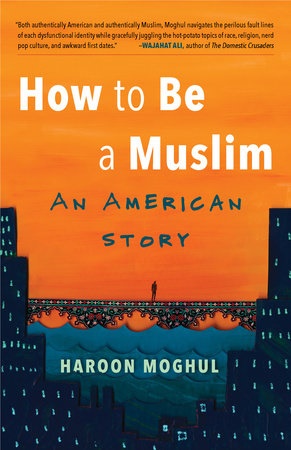 While that's an undesirable spotlight for anyone to occupy, it caught Moghul in the midst of an ongoing crisis of faith, one that began when he was a teen and frequently left him wondering if he was a fraud. Originally triggered by adolescent feelings of love and lust, his dark night of the soul grew over time to swallow his marriage, mind and nearly his life. Fortunately, a Pakistani Muslim psychiatrist was able to clue him into what else was weighing him down: bipolar disorder.
While that's an undesirable spotlight for anyone to occupy, it caught Moghul in the midst of an ongoing crisis of faith, one that began when he was a teen and frequently left him wondering if he was a fraud. Originally triggered by adolescent feelings of love and lust, his dark night of the soul grew over time to swallow his marriage, mind and nearly his life. Fortunately, a Pakistani Muslim psychiatrist was able to clue him into what else was weighing him down: bipolar disorder.


 In the mid-1960s, Ken Kesey and his communal band of Merry Pranksters toured the United States on a psychedelic school bus named Further, consuming copious quantities of psychoactive drugs and hosting Acid Test parties, from which they dispensed LSD-laced Kool-Aid in a semi-spiritual quest for "intersubjectivity." Kesey (1935-2001), poet, essayist and author of One Flew Over the Cuckoo's Nest, considered himself a bridge between the '50s Beats and '60s hippies. He and the Pranksters helped sow the seeds of flower power counterculture on their cross-country travels, and were also friends with the Warlocks, later known as the Grateful Dead.
In the mid-1960s, Ken Kesey and his communal band of Merry Pranksters toured the United States on a psychedelic school bus named Further, consuming copious quantities of psychoactive drugs and hosting Acid Test parties, from which they dispensed LSD-laced Kool-Aid in a semi-spiritual quest for "intersubjectivity." Kesey (1935-2001), poet, essayist and author of One Flew Over the Cuckoo's Nest, considered himself a bridge between the '50s Beats and '60s hippies. He and the Pranksters helped sow the seeds of flower power counterculture on their cross-country travels, and were also friends with the Warlocks, later known as the Grateful Dead. Very little is known about 61-year-old Dutch librarian Peter de Smet, the author of The Secret Diary of Hendrik Groen, 83¼ Years Old, out now from Grand Central Publishing. But there is plenty to be learned about Hendrik, an endearing, curmudgeonly character with plenty to say. Here's an excerpt:
Very little is known about 61-year-old Dutch librarian Peter de Smet, the author of The Secret Diary of Hendrik Groen, 83¼ Years Old, out now from Grand Central Publishing. But there is plenty to be learned about Hendrik, an endearing, curmudgeonly character with plenty to say. Here's an excerpt:
